Alerts
When patients have been hospitalized, they need timely follow-up care to lessen their risk of readmission or complications.
Multiple types of Alerts are available through the CHIE: ADT Alerts, COVID-19 Lab Result Alerts and Lab Result Delivery Alerts
Contact UsADT Alerts
Receive/Send secure notifications when a patient is admitted, discharged, or transferred to/from a hospital or emergency department
COVID-19 Lab Alerts
Receive real-time alerts on your patients’ COVID-19 lab results as soon as tests are finalized to keep your patients and your staff safe and informed.
Learn MoreLab Result Alerts
Get alerted when your patients get lab/radiology results ordered outside of your organization to stay updated on your patients’ episodes of care.
Real-time CHIE Alerts for Improved Care Coordination.
Hospitals and medical centers can securely send notifications of hospitalizations, ED visits, and COVID-19 lab orders and diagnoses through UHIN to other healthcare organizations. Real-time CHIE Alerts enable care teams to coordinate interventions for patients more effectively, especially those in greater need of physician oversight.
Granger Medical Clinic Case Study
Granger’s Transitional Care Management (TCM) team used the CHIE and Alerts to reduce readmission rates by more than half. The team has reduced readmissions from 23% to 9%.
Granger increased the number of identified patients from approximately one per week to an estimated 750 per month.

“The CHIE… offered us an active patient database and its platform has allowed our transitional care program to become one of the [most] robust within the healthcare space, and has allowed our organization and our patients to achieve long-term success.”
MJ Tran, SVP, Clinical Development, Physicians Accountable of Utah
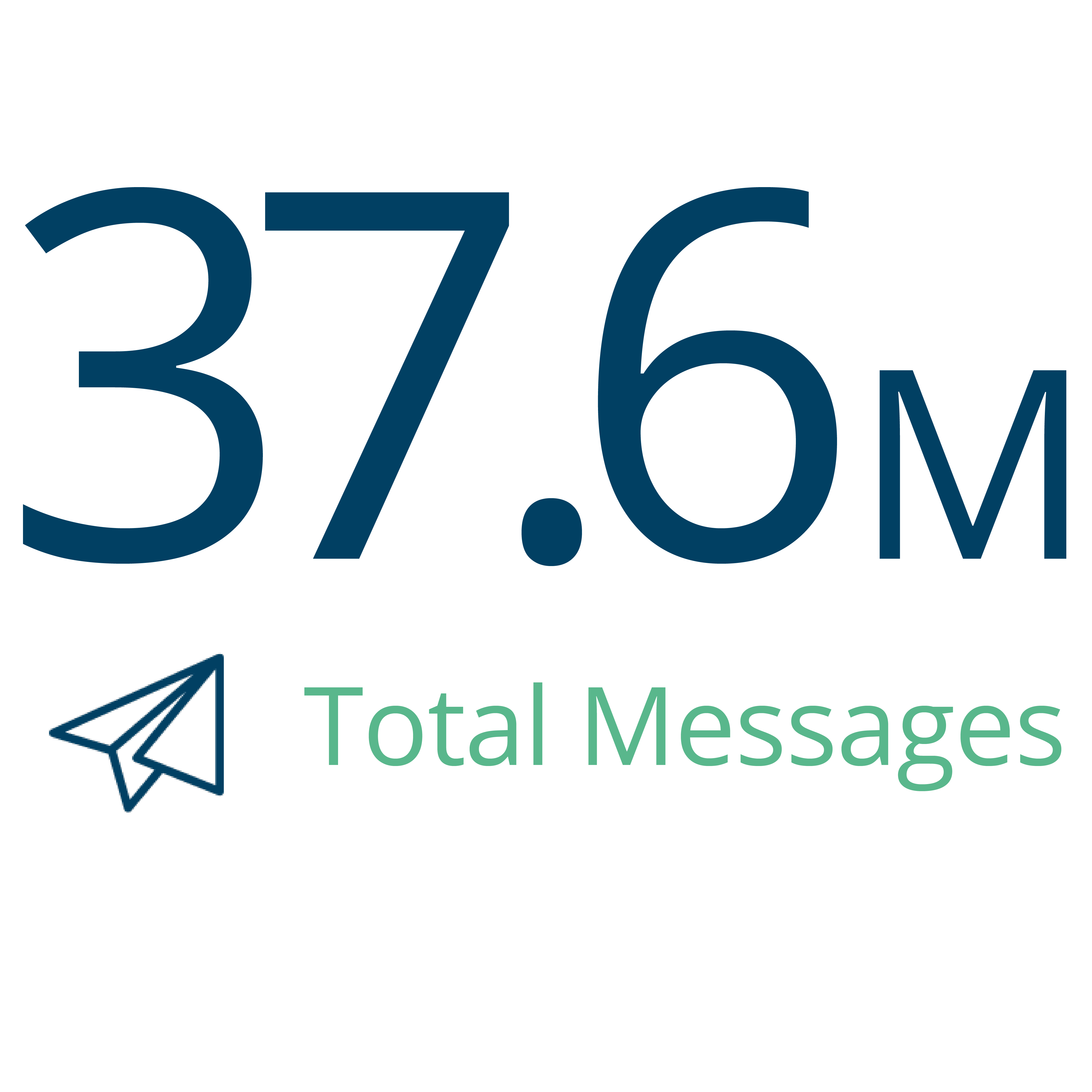
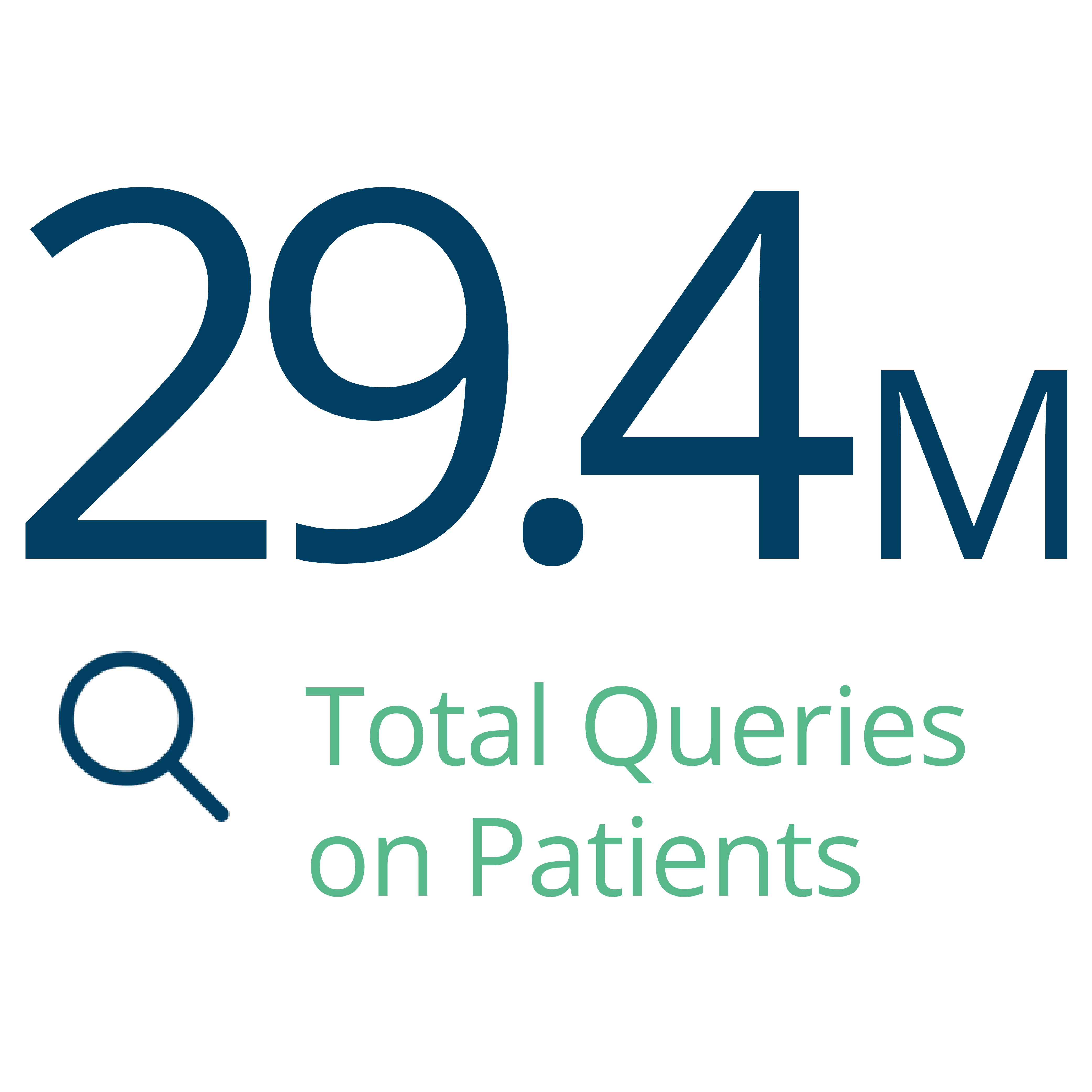
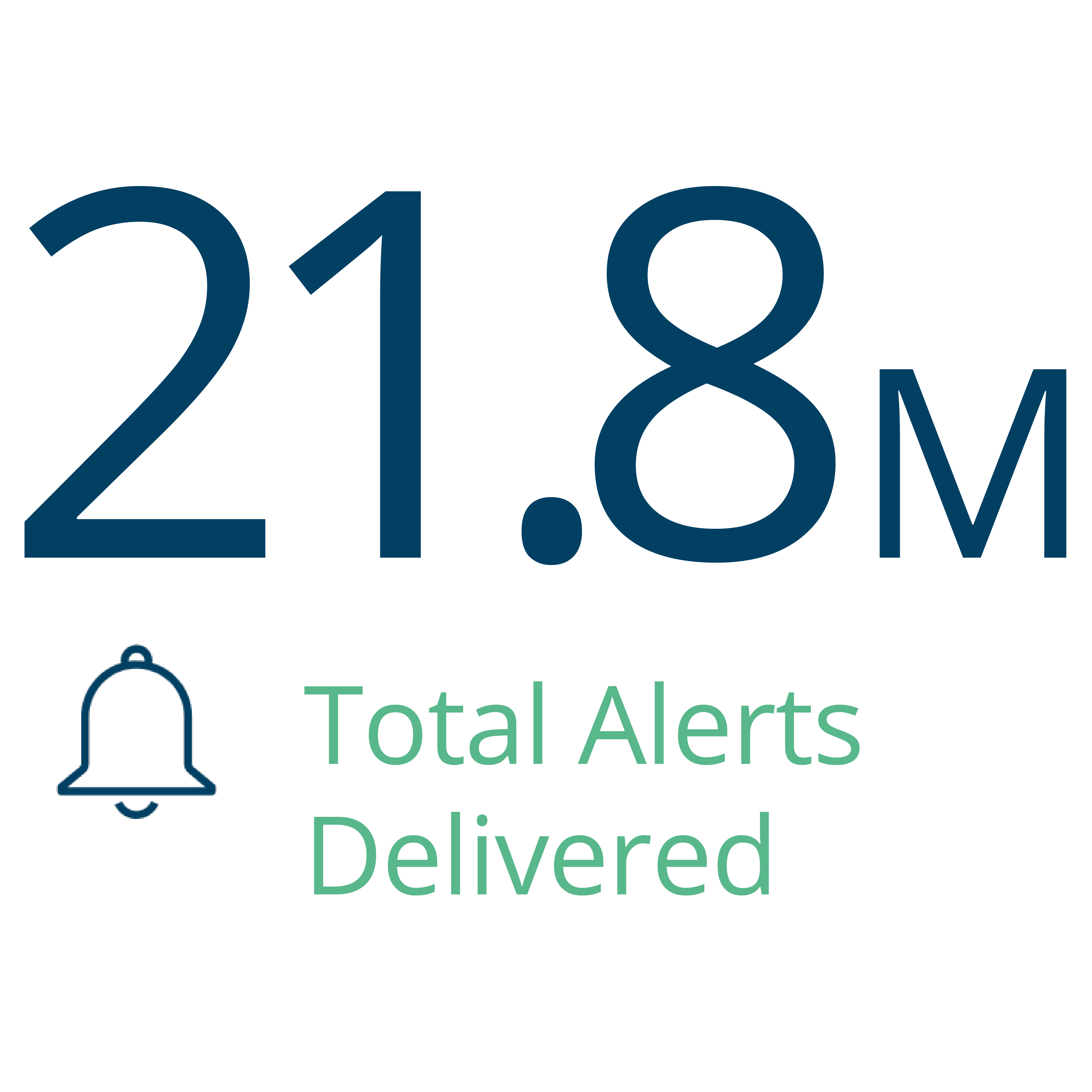
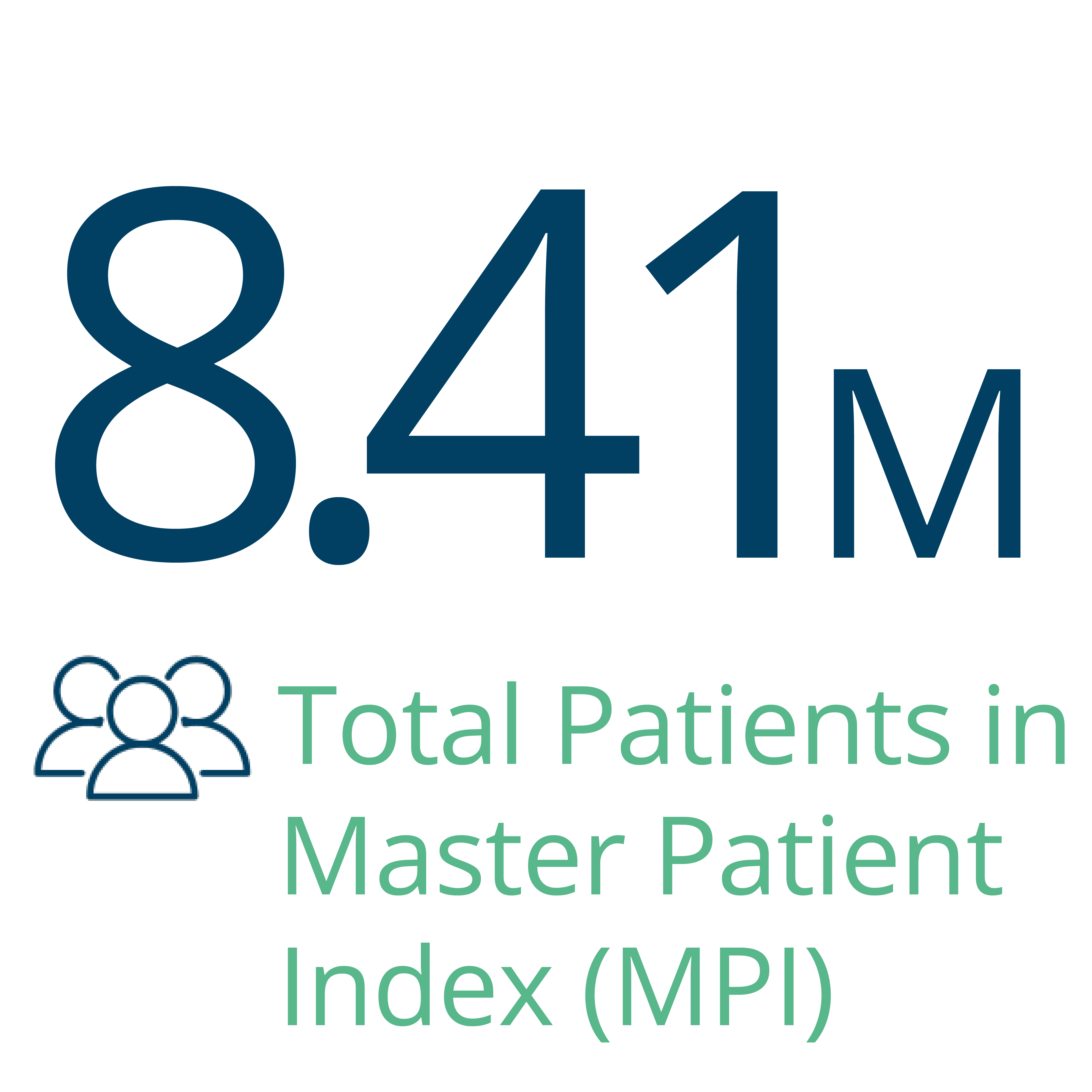
Alerts Your Way
Your alerts experience can be customized to fit your needs.

Event
Choose whether to get alerts upon admission, discharge, and/or transfer.

Timing
Alerts can be delivered in real-time, a specific time of day, or a specific day of the week.

Delivery
We support delivery of alerts via Direct, SFTP or a VPN.
Nationwide Interoperability Enabled by the Patient Centered Data Home (PCDH)
UHIN is connected nationwide to seamlessly deliver patient health information across state lines and across health systems, improving the patient experience by making health information available whenever and wherever care occurs. See which states UHIN is connecting to:
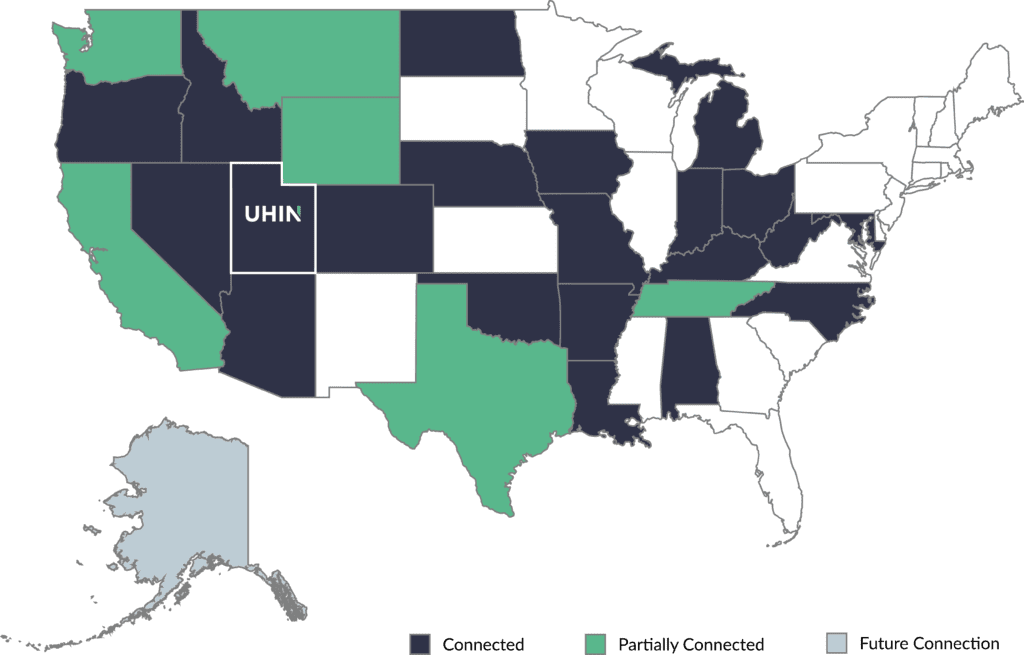
Meet Requirements for Interoperability and Patient Access
CHIE Alerts meets the requirements for The Centers for Medicaid and Medicare (CMS) electronic patient event notifications rules. Learn more here INTEROPERABILITY AND PATIENT ACCESS FACT SHEET and here FEDERAL REGISTER: MEDICARE AND MEDICAID PROGRAMS.
LACE Risk Indicator
The LACE risk score can be provided with subscriptions via Alerts or viewed in the portal. The LACE score is used to predict risk of death or readmission within 30 days of hospital discharge.
The score uses length of stay (L), acuity of the admission (A), comorbidity of the patient (C) and emergency department use in the duration of 6 months before admission (E) to calculate the risk. LACE scores range from 1-19 and >= 10 are considered high risk.
When your team receives an alert or a batch of alerts, a LACE score will be available for each patient. Filter patients by score within the alerts platform and prioritize TCM and interventions.
Falls Risk Indicator
UHIN Falls Risk indicator ingests non-transport information from EMS through the state’s National Emergency Medical Services Information System (NEMSIS) and uses an algorithm with data points from the patient record to provide a yes/no risk assessment of a patient’s risk of falling in the short term.
Using the Falls Risk Indicator, physicians are notified when their patients are at-risk for damaging falls and can intervene.
Historical Look-Backs
Prioritize patient follow-up based on recent encounters to reduce the number of readmissions and understand which patients to direct to the appropriate level of care.
Historical look-backs are triggered automatically when a patient is admitted, discharged or transferred and allows the care team to view the number of previous Inpatient Admissions and Emergency Admissions.
Start Receiving and Sending CHIE Alerts Now!
